It was a spontaneous purchase. After I succed with restoring my Waverly I deciced that I want to try with the first walking Tawny from 2006. I found the perfect specimen with working mechanics and a small amount of abrasions at an affordable price.
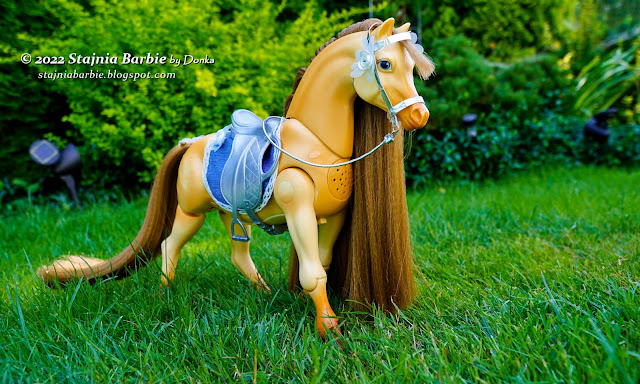 |
| Lucy Kate - 2006 Tawny after renovation |
As for this model - it is Tawny from 2006. The first battery-powered walking horse of this century. The basis for its creation was the High Stepper from the 90s, it is probably practically identical to its progenitor - apart from the disfiguring loudspeaker on the front. The High Stepper was just marching, Tawny except that she beautifully walks - also neighs. Although I really don't know if this nasty speaker grille was necessary and why in such a visible place. Well, I will not elaborate on this model here anymore and compare it to other mobile horses. Most importantly - the switch is located between the front legs, the arm casing has a different design than that of the Sprint and there are screws on the front legs. It is powered by four thin finger batteries (AAA) and the battery cover is secured with a screw.
Tawny has a shaded body and orange markings on the legs and head. However, the shading is more durable than the horses from the Cali Girls series - when I accidentally doused it with alcohol, there was no trace of paint on the swab I wiped it with and nothing rubbed off.
These horses are quite popular on the secondary market now, so it was not difficult to hunt it. Most of them have matted or cut hair.
The one I hunted came to me with a completely cut off mane and a trimmed tail. The saddle she was wearing was from much older static models - the women's saddle - which lacked the element holding the doll, the stirrup was torn off, and the buckle was broken and replaced with a thread. In addition, the surface was scratched - it was completely useless.
 |
| 2006 Barbie Tawny walking horse - Lucy - when she arrived |
Tawny's hair replacement wasn't as pleasant as Sprint's. The tail resisted removal for quite a long time. It turned out that it is secured not with an elastic band, as in the older models, but with the thin strings that were not visible at all. In addition, they were tightened with a plastic ring. As I wrote before - the hair of this Tawny was quite thin, which made it difficult to disassemble it, because when grasped with tweezers and pulled, it easily broke. The only way was to wrap a thin strand around fingers and pull it, though not every strand gave up so easily. So, fighting the tail took longer than I suspected.
The mane was also not easy to remove. It turned out that it is built differently than in Sprint's. My horse has the hair cut even with the neck - it did not make my work any easier. The base turned out to be rudimentary, the hair appeared partially glued. When I pulled it with the pliers, a fragment of a mane broke off. As with my Wavy, I broke the lower neck joint - which made maneuvering much easier. And at the end I took out the pieces of the foil base as much as I could.
The hair I intended for this filly is strawberry-colored henlon, although for me it's just light brown. This is my first time working with this type of hair. My first impression was pretty good. The hair was quite pleasant to the touch, light, didn't look puffed up and looked quite natural. They had a slightly crimped structure.
 |
| Henlon hair for Lucy |
I measured out the necessary amount, but I was not sure if it was enough. Somehow it was easier for me to prepare the necessary amount from the kanekalon.
Attaching the tail also proved to be more difficult than with Sprint. Due to the bolts holding the body, threading the hair through the inner bar was quite a challenge. When, after a long battle, I succeeded - I put on a protective theater and pressed it into the horse's body.
I prepared the mane just like for the Wavy, except that I joined the individual strands in the opposite way - not sideways, but front to back. Which made the mane even more dense.
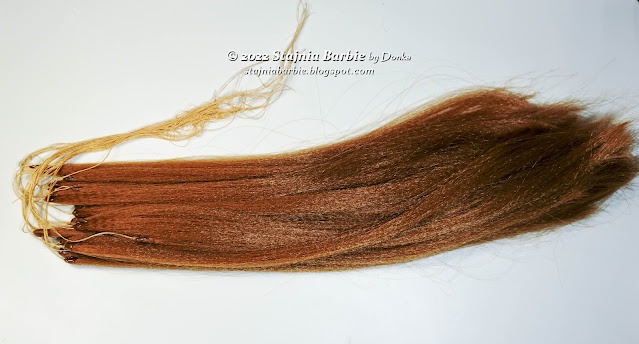 |
| Ready strands for the mane |
I wanted the filly to have a fringe, so I chose the thickest strand and attached it at an angle to the first section - the hair for the fringe is arranged by itself. The mane turned out more dense than in the plan, but this is Barbie's horse and it's his distinguishing feature is that it has beautiful and long hair.
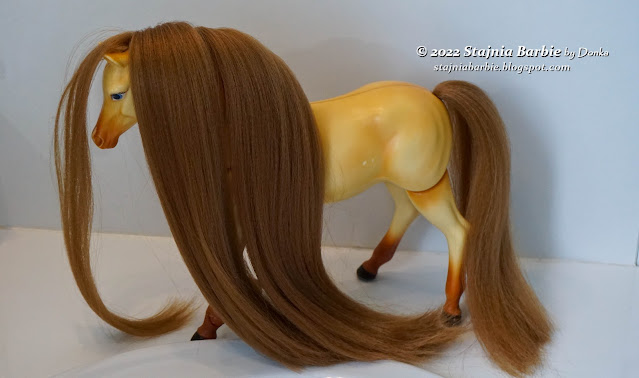 |
| Lucy right after the hair replacement |
To my surprise - the henlon did not give in to the warm air from the curling dryer - the crimping did not disappear. However, it was possible to style the hair and slightly reduce its fluffiness.
I find this hair color very good for her. I have no idea why Mattel chose all white for this horse.
I trimmed her mane around the hocks - so that it would not interfere with walking. I cut the fringe at about half of the head, and left the tail quite long - even if it becomes a toy that someone wants to cut hair again, it will have something to shorten.
Immediately after finishing her hair replacement, I started composing a new outfit and tack. I had a silver saddle from a fake Cali horse, a horse belonging to a Barbie clone called Defa Lucy. Hence the idea for a name for the mare - Lucy. And as I like more complex names, I also added Kate to Lucy - I was just watching a series in which one of the characters was called Kate and had similar hair. This is how a beautiful name was created - Lucy Katherine Tawny.
Due to the fact that the saddle is silver - the bridle and reins also had to be that color. I made her a bridle of leather-like material, and a silver cord reins. For the saddle pad, I chose jeans finished with lace. The blue color goes well with her blue eyes. The rest of the decorations are flowers with ribbons. In addition, the flowers have a shiny silver gem stones, which is to be combined with a silver tack.

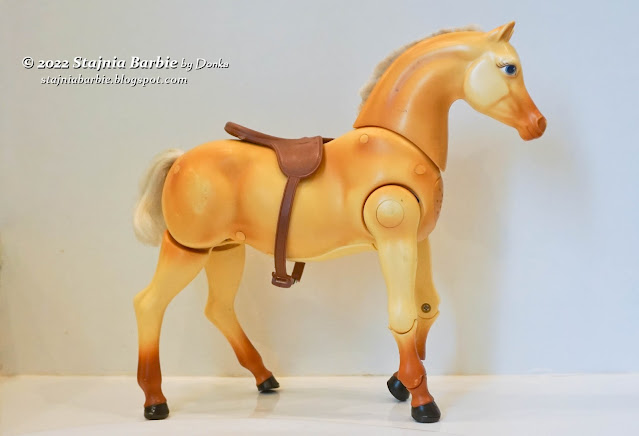
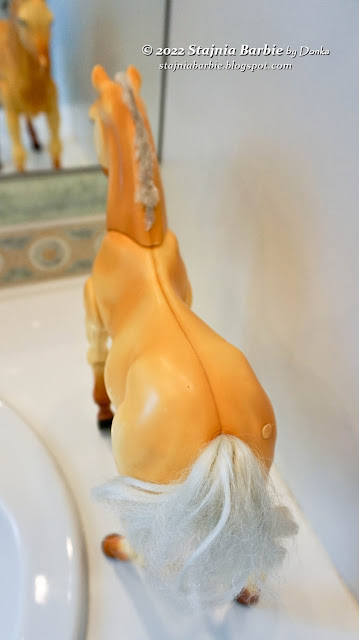
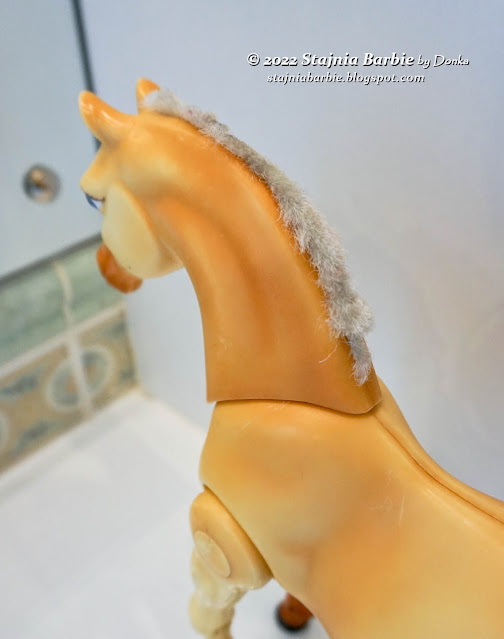
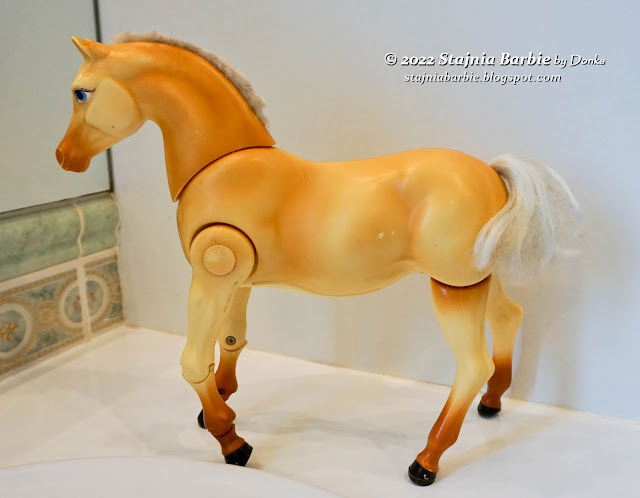
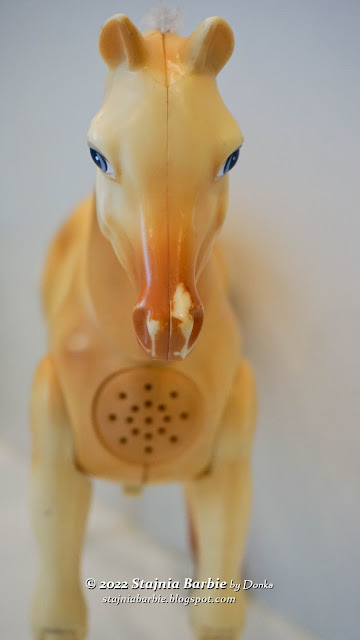
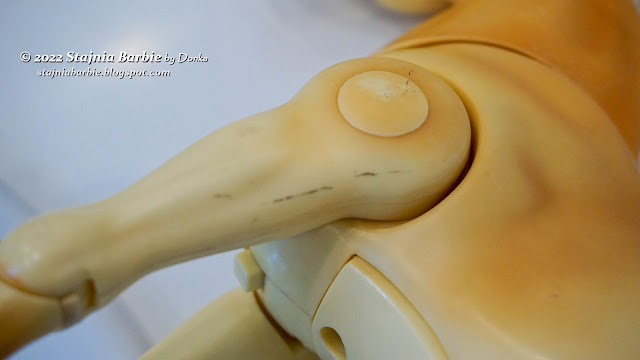
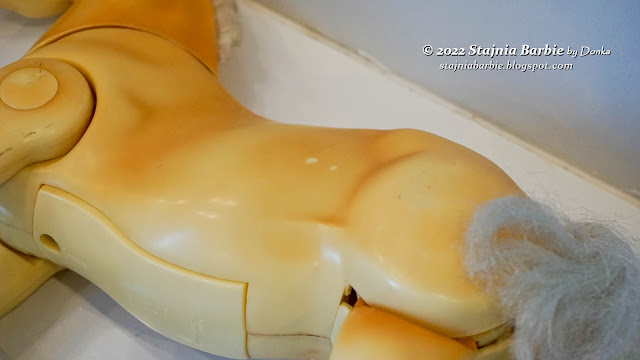
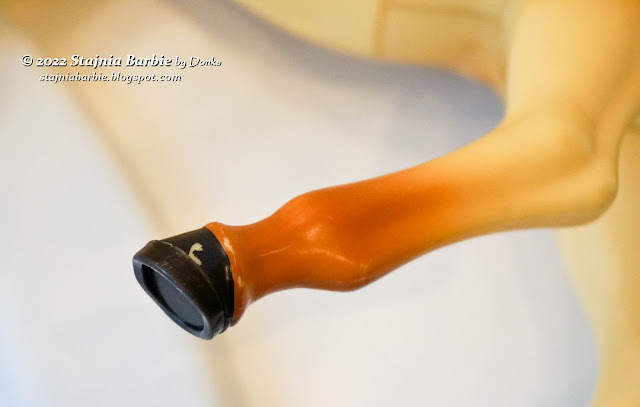
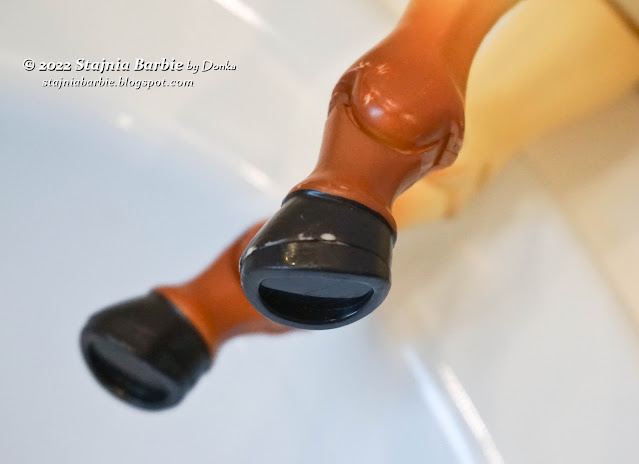
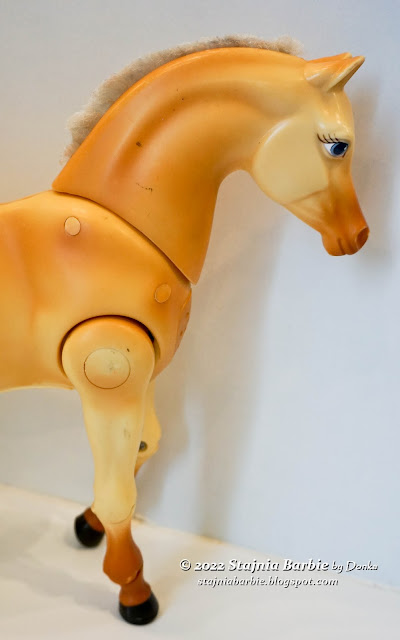
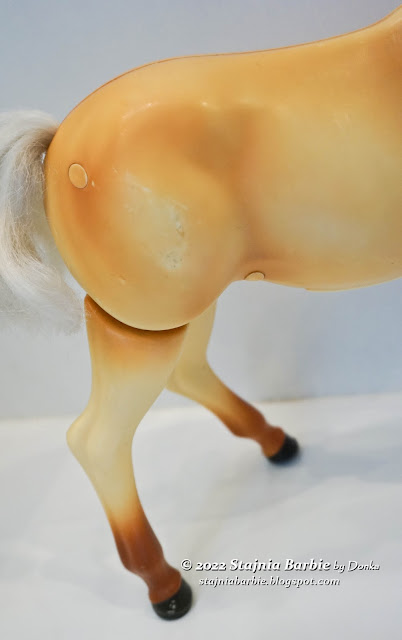
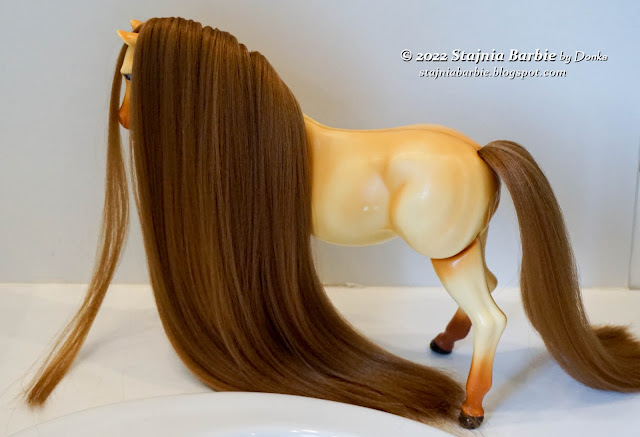
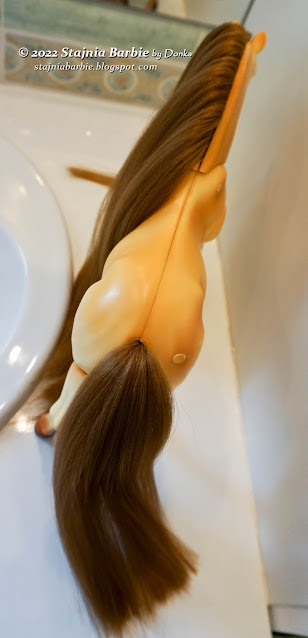
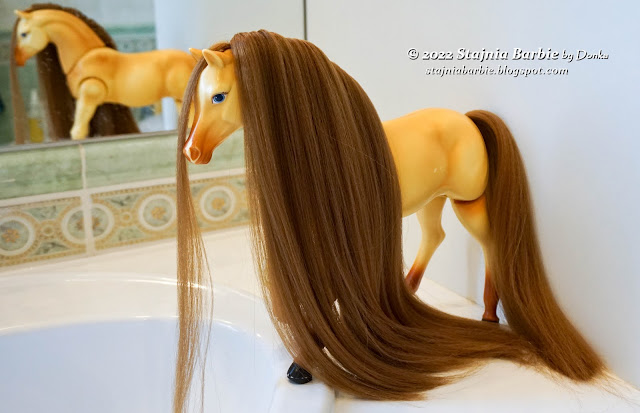

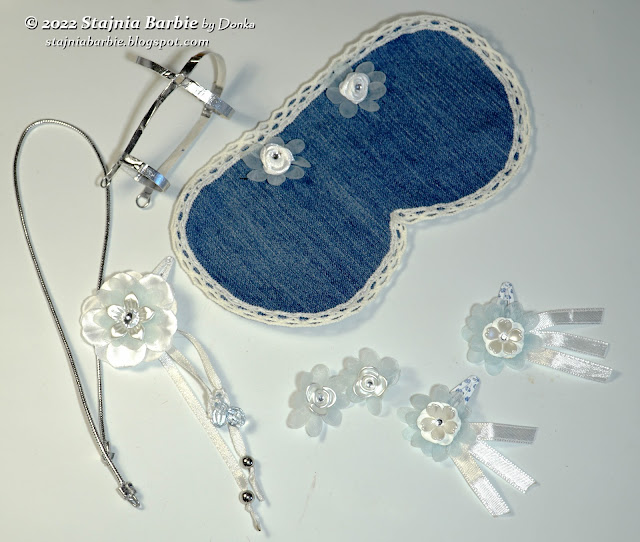




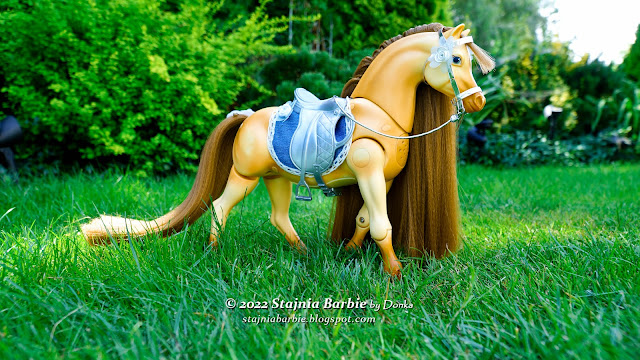
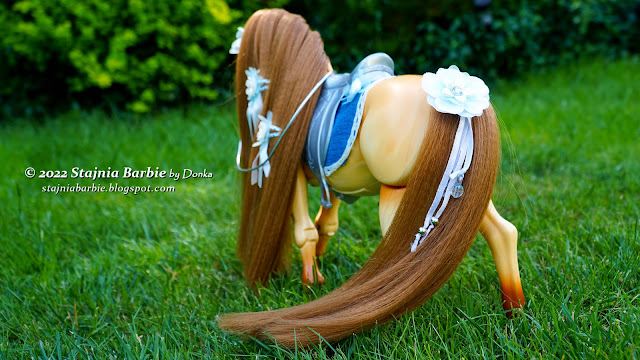

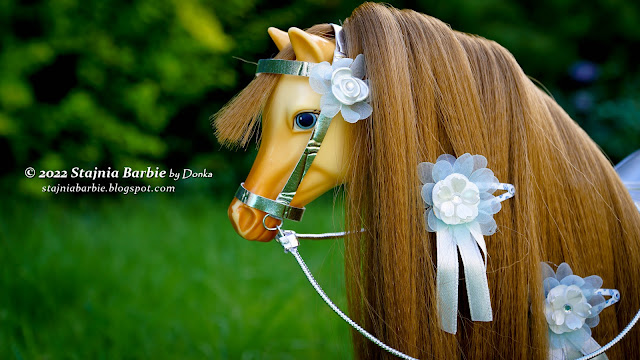
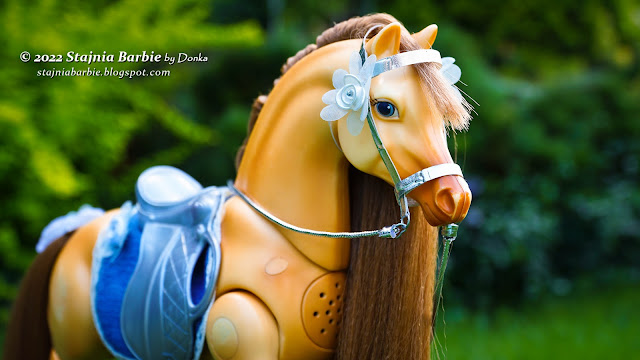
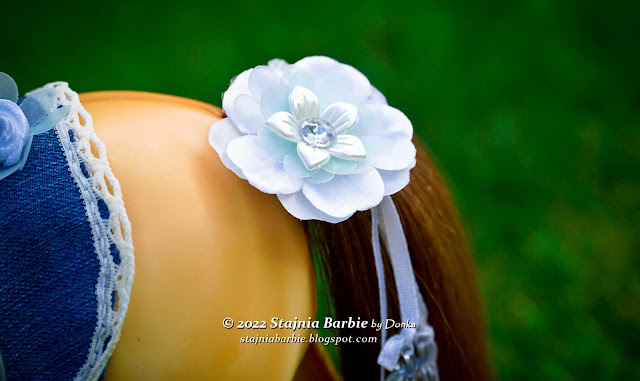
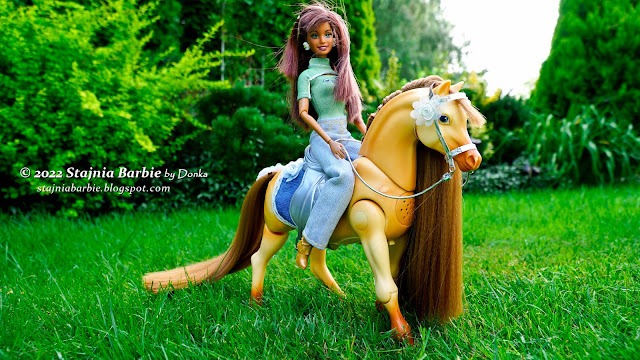
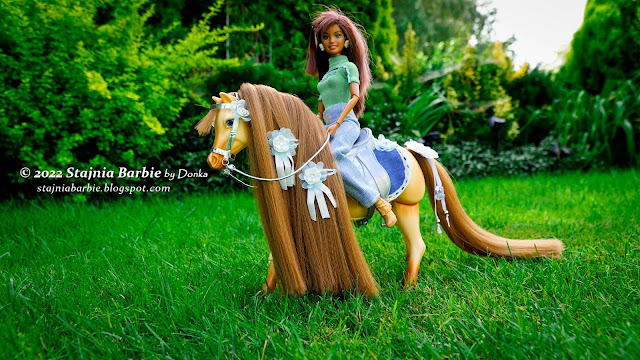
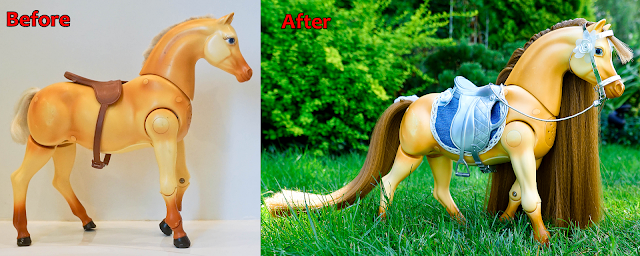
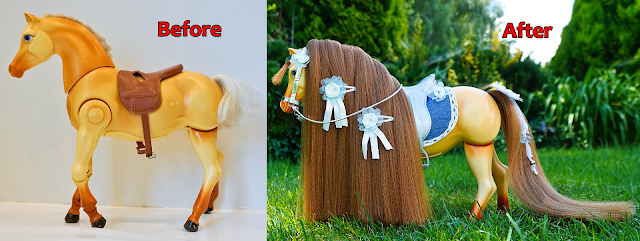
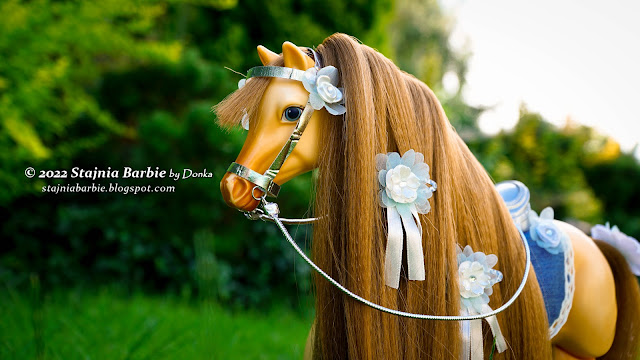
Comments
Post a Comment